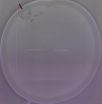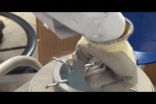(Press-News.org) Eyewitness accuracy declines steadily and quite measuredly as the distance increases. Additionally, a good deal of guess work or so-called "false alarms" also comes into play as the distance increases. These findings have implications for the trustworthiness of eyewitness accounts that are used to solve criminal cases. Research led by James Lampinen of the University of Arkansas in the US and published in Springer's journal Psychonomic Bulletin & Review sheds light on the matter.
Eyewitness identification plays a crucial role in approximately 80,000 criminal cases per year in the United States. While other research has already examined the relationship between identification accuracy and distance, this study is the first to do so under carefully controlled outdoor conditions, and by using actual people. The researchers asked 195 college students to view 8 people who were presented to them at 6 different distances, ranging between 5 (4.6 meters) and 40 yards (36.6 meters). They were then shown 16 photographs: 8 of the targets they saw, and 8 photographs of other people that matched a description of the initial targets. Participants used an eight-point scale to indicate just how confident they were about having seen each individual before.
Similar to the findings of previous research, Lampinen's group observed a steady decrease of 0.55 percent per yard (91 cm) in correct identifications being made. This was further coupled with an increase in false alarms (at 0.44 percent per yard) as the distance between the witness and the target grew.
The research team made a new discovery in finding that the response bias* of witnesses grew increasingly liberal as distances grew greater. These results conform to the principles of Face-Space theory that there is a so-called "average" face around which clusters a multitude of faces that are similar in appearance, while dissimilar faces lie farther apart. According to facial averaging, the fine-grained details that are normally captured if faces are viewed close up are filtered out as distance increases. This in turn makes the faces more average-looking, and therefore makes them more similar in appearance.
"For smaller crimes such as burglary, robbery, non-sexual assault, or vandalism, DNA is rarely available at the crime scene and not typically appropriate to the case. Although penalties for such crimes are light compared to sexual crimes or murders, the future lives of those convicted could still be compromised if eyewitness accounts alone are taken into account," says Lampinen. He stresses the need for further research about the quality and accuracy of eyewitness accounts that are used for forensic purposes.
INFORMATION:
*The wide range of cognitive biases that influence participants' responses
Reference: Lampinen, J.M. et al (2014). Effects of Distance on Face Recognition: Implications for Eyewitness Identification, Psychonomic Bulletin & Review DOI 10.3758/s13423-014-0641-2
The full-text article is available to journalists on request.
Distance influences accuracy of eyewitness IDs
First study to use controlled outside setting and actual people to test eyewitness accuracy across a variety of distances
2014-05-13
ELSE PRESS RELEASES FROM THIS DATE:
Follow that fish!
2014-05-13
New findings published by researchers at the New York University Polytechnic School of Engineering are helping to unravel the complex interplay between alcohol and social behavior and may lead to new therapies for mitigating the negative impacts of alcohol use and abuse. Their experiments, published in the current issue of Alcohol: Clinical and Experimental Research, center not on patrons at a local happy hour, but on far simpler creatures: zebrafish.
A team led by Maurizio Porfiri, associate professor of mechanical and aerospace engineering and director of the school's ...
3-D 'map' of enzyme completed by MU scientists could lead to more effective drugs
2014-05-13
COLUMBIA, Mo. – The human body is full of proteins called enzymes that help nearly every function in the body. Scientists have been studying enzymes for decades in order to learn how they work and how to create better drugs and medical treatments for many ailments. Now, University of Missouri researchers have completed a 3-D map of an enzyme called Proline utilization A (PutA). PutA facilitates metabolism by adding oxygen to molecules. John Tanner, a professor in the MU Department of Biochemistry, says mapping this enzyme will give researchers a better understanding of ...
Achieving patient-centered care across the spectrum
2014-05-13
HANOVER, NH – Providing patient-centered care consistently in clinical practice requires practitioners who are able to recognize that different clinical situations require different approaches and are skilled enough to adapt.
Across the range of health-care problems, patient-centered care has been found to be associated with improved patient outcomes, including improved self-management, patient satisfaction, and medication adherence, and some studies have found evidence for improved clinical outcomes. Data from surveys and research indicate that clinicians often do not ...
Obsessive-compulsive disorder questionnaire may give clues to other mental health problems
2014-05-13
A shortened version of a questionnaire used by psychologists to assess risk factors for obsessive-compulsive disorder also may help determine the risk of depression and anxiety, according to a Baylor University study.
The revision may be a good fit for assessing the risk of mental health issues stemming from certain beliefs — such as seeing threats as greater than they are and feeling that things are not right unless they are perfect. Such dysfunctional beliefs are central to obsessive-compulsive disorder (OCD), said researcher Thomas Fergus, Ph.D., assistant professor ...
Women's empowerment and Olympic success
2014-05-13
ALLENDALE, Mich. — New research shows that nations with greater women's empowerment win more medals and send more athletes to the Summer Olympics. The effect of women's empowerment held for both men and women, although it was stronger for female athletes, according to a study by Grand Valley State University researchers. The findings were published in April 2014 in the Journal of Sports Economics.
The research, led by Aaron Lowen, associate professor of economics at Grand Valley State, provides evidence for the popular but previously untested hypothesis that women's empowerment ...
Fossil palm beetles 'hind-cast' 50-million-year-old winters
2014-05-13
Fifty-million-year-old fossil beetles that fed only on palm seeds are giving Simon Fraser University biologists Bruce Archibald and Rolf Mathewes new information about ancient climates.
According to their research, published online this week in The Proceedings of the National Academy of Sciences, these fossil beetles indicate that during a period of global warming in the geological past, there were mild, frost-free winters extended even in the uplands of ancient western North America.
Working with co-authors Geoffrey Morse of the University of San Diego, California, ...
Letting it go: Take responsibility, make amends and forgive yourself
2014-05-13
Forgiving ourselves for hurting another is easier if we first make amends — thus giving our inner selves a "moral OK," according to Baylor University psychology researchers.
The research, published in The Journal of Positive Psychology, is significant because previous studies show that the inability to self-forgive can be a factor in depression, anxiety and a weakened immune system, researchers said.
"One of the barriers people face in forgiving themselves appears to be that people feel morally obligated to hang on to those feelings. They feel they deserve to feel bad. ...
UT Dallas team creates flexible electronics that change shape inside body
2014-05-13
Researchers from The University of Texas at Dallas and the University of Tokyo have created electronic devices that become soft when implanted inside the body and can deploy to grip 3-D objects, such as large tissues, nerves and blood vessels.
These biologically adaptive, flexible transistors might one day help doctors learn more about what is happening inside the body, and stimulate the body for treatments.
The research, available online and in an upcoming print issue of Advanced Materials, is one of the first demonstrations of transistors that can change shape and ...
Radiation from early universe found key to answer major questions in physics
2014-05-13
Astrophysicists at UC San Diego have measured the minute gravitational distortions in polarized radiation from the early universe and discovered that these ancient microwaves can provide an important cosmological test of Einstein's theory of general relativity. These measurements have the potential to narrow down the estimates for the mass of ghostly subatomic particles known as neutrinos.
The radiation could even provide physicists with clues to another outstanding problem about our universe: how the invisible "dark matter" and "dark energy," which has been undetectable ...
Smart drugs pose special risks to the developing brain of young people
2014-05-13
Over a million American students misuse prescription drugs or take illegal stimulants to increase their attention span, memory, and capacity to stay awake. Such "smart drugs" become more and more popular due to peer pressure, stricter academic requirements, and the tight job market. But young people who misuse them risk long-term impairments to brain function, warn Kimberly Urban at the University of Delaware and Wen-Jun Gao at Drexel University College of Medicine, USA, in a NIH-funded review published in the open-access journal Frontiers in Systems Neuroscience.
The ...
LAST 30 PRESS RELEASES:
The Ceramic Society of Japan’s Oxoate Ceramics Research Association launches new international book project
Heart-brain connection: international study reveals the role of the vagus nerve in keeping the heart young
Researchers identify Rb1 as a predictive biomarker for a new therapeutic strategy in some breast cancers
Survey reveals ethical gaps slowing AI adoption in pediatric surgery
Stimulant ADHD medications work differently than thought
AI overestimates how smart people are, according to HSE economists
HSE researchers create genome-wide map of quadruplexes
Scientists boost cell "powerhouses" to burn more calories
Automatic label checking: The missing step in making reliable medical AI
Low daily alcohol intake linked to 50% heightened mouth cancer risk in India
American Meteorological Society announces Rick Spinrad as 2026 President-Elect
Biomass-based carbon capture spotlighted in newly released global climate webinar recording
Illuminating invisible nano pollutants: advanced bioimaging tracks the full journey of emerging nanoscale contaminants in living systems
How does age affect recovery from spinal cord injury?
Novel AI tool offers prognosis for patients with head and neck cancer
Fathers’ microplastic exposure tied to their children’s metabolic problems
Research validates laboratory model for studying high-grade serous ovarian cancer
SIR 2026 delivers transformative breakthroughs in minimally invasive medicine to improve patient care
Stem Cell Reports most downloaded papers of 2025 highlight the breadth and impact of stem cell research
Oxford-led study estimates NHS spends around 3% of its primary and secondary care budget on the health impacts of heat and cold in England
A researcher’s long quest leads to a smart composite breakthrough
Urban wild bees act as “microbial sensors” of city health.
New study finds where you live affects recovery after a hip fracture
Forecasting the impact of fully automated vehicle adoption on US road traffic injuries
Alcohol-related hospitalizations from 2016 to 2022
Semaglutide and hospitalizations in patients with obesity and established cardiovascular disease
Researchers ‘listen in’ to embryo-mother interactions during implantation using a culture system replicating the womb lining
How changing your diet could help save the world
How to make AI truly scalable and reliable for real-time traffic assignment?
Beyond fragmented markets: A new framework for efficient and stable ride-pooling
[Press-News.org] Distance influences accuracy of eyewitness IDsFirst study to use controlled outside setting and actual people to test eyewitness accuracy across a variety of distances


